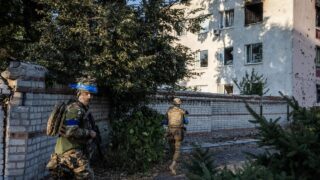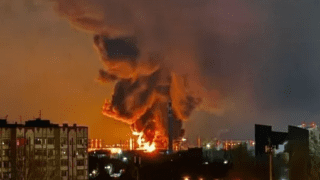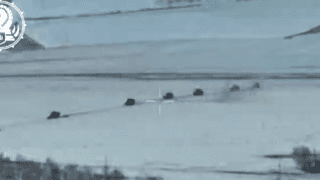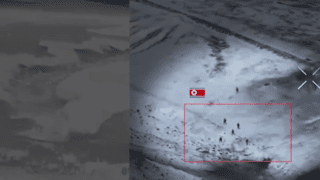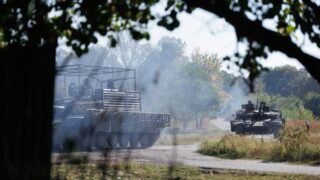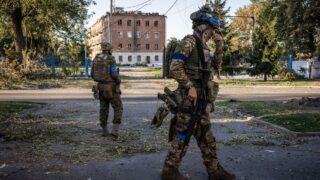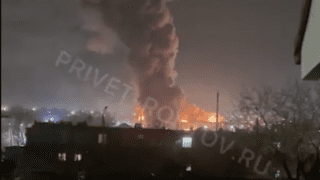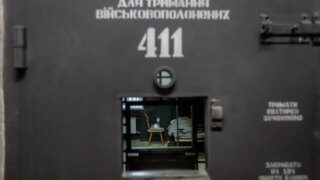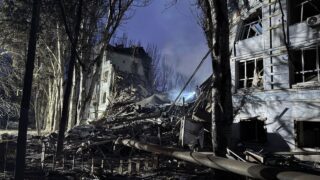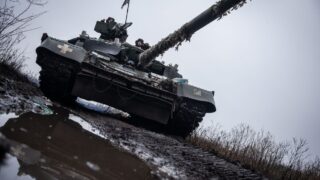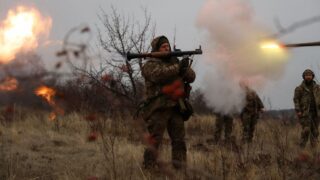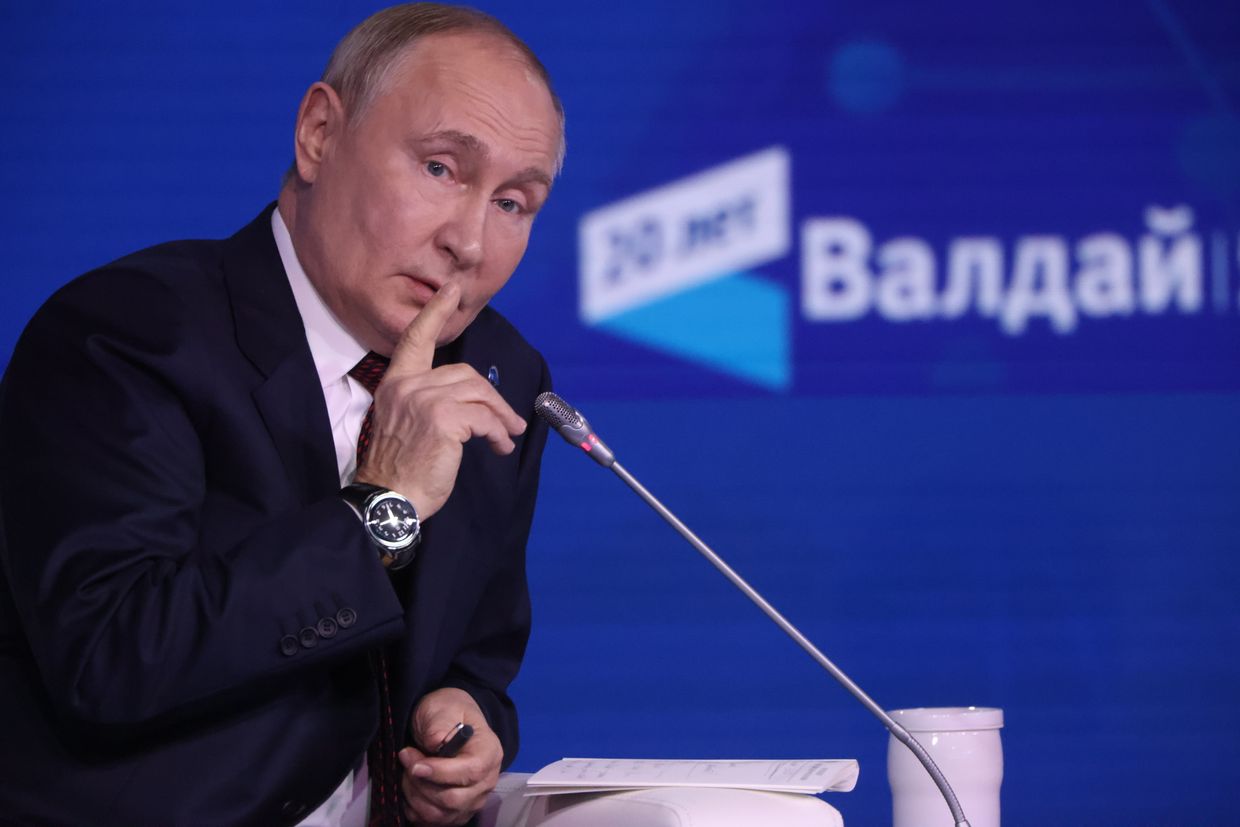
What Putin hopes to achieve in Ukraine before Trump enters the White House
Donald Trump's entrance into the White House on Jan. 20 promises to offer a seismic shift in the U.S.'s approach to Russia's full-scale invasion of Ukraine and a potential "freezing" of the war.
Trump has repeatedly pledged to end the war within "24 hours," sparking fears he might push Ukraine toward painful territorial concessions to achieve a quick peace deal that could be favorable to Russian President Vladimir Putin.
Although he hasn't provided any details about how he will achieve a swift peace deal, multiple media reports indicate his plan could entail freezing the war, suspending Ukraine's NATO accession, and establishing a demilitarized zone in the east of the country.
A lot could change before the change in administrations, and both Ukraine and Russia will be seeking to enter any potential freezing of the front lines, and the negotiations that would follow in the strongest possible position.
With a battlefield situation currently bending in Russia’s favor, Moscow is likely hoping that recapturing territory from Ukrainian troops in its Kursk region, pushing further into eastern Ukraine, and opening a new axis in Zaporizhzhia Oblast could give it the upper hand before Trump takes office.
Kursk
One of the most pressing concerns for Putin will be the sizable number of Ukrainian troops still on Russian soil in Kursk Oblast.
Kyiv launched a surprise offensive into Kursk Oblast in August, swiftly moving to capture around 1,000 square kilometers of Russian territory. Russian forces have taken back about half since then and are moving to recapture the rest.
"From what I've seen, there seems to be this belief that he's told his military, that they have to take Kursk (back) by the beginning of the year," Dr. Stephen Hall, lecturer in Russian and post-Soviet politics at the University of Bath, told the Kyiv Independent.


And all the signs point towards this — on Nov. 11, President Volodymyr Zelensky said Ukrainian soldiers are holding off nearly 50,000 troops in the Kursk region, including a sizeable contingent of North Koreans.
Fighting there will likely be fierce — if Ukraine can hold on until Trump takes office, it could make the idea of Putin agreeing to any proposal to freeze the war unfeasible. Freezing the war with a front line inside Russia would likely be a non-starter for the Kremlin.
"Russia has amassed forces and will use the same tactics as in Donbas — artillery and glide bombs to smash Ukrainian defenses, before small-scale infantry assaults," John Foreman, the U.K.'s former defense attache in Moscow from 2019 to 2022, told the Kyiv Independent.
"It's not pretty but it has been effective."


Donbas
One of the stated aims of the Kusrk incursion was to draw away Russian troops from Donetsk Oblast in Ukraine’s eastern Donbas region, where they have been making grinding advances for months now.
It didn't work. Over the autumn months since the incursion was launched, chunks of Ukrainian territory in the east have been lost.
Russian forces have also made operationally significant gains near Toretsk, Chasiv Yar, and Kupiansk.
It was reported on Nov. 1 that Russia had seized more territory over the course of one week than at any point in 2024.
Russia's gains have come at an enormous cost — according to figures released by Kyiv on Nov. 11, Moscow's forces suffered their deadliest day since the start of the full-scale invasion, losing 1,950 men over the preceding 24 hours.
The figure surpassed the previous record of 1,770 set just the day before, and marks an ever-upward trend that is now months-long.
Despite this, Russia at present appears to be able to sustain the losses, even if it is having to resort to ever-higher financial incentives in order to attract new recruits.
But even at the current increased pace, it would take Russia almost a year to capture the additional 10,000 square kilometers (3,860 square miles) of territory required to capture the entirety of Donetsk and Luhansk oblasts.


Putin's stated goal of the war is the taking all of Donbas, so how this measures up with a frozen war without all of it under Russian control remains to be seen.
According to Hall, even if Russian forces don't take all of Donbas, Putin will use the current strength of his army to "dictate his terms."
"He believes that negotiations will be done from the position of weakness (on the Ukrainian side), that the West is weak, and therefore he will sit down because it's a way for him to dictate his terms," he said.
"Which will be the end of Western sanctions, it will be Ukrainian neutrality forever, and it will be facts on the ground, these are now Russian lands, and we want a pro-Russian government in Kyiv."
Zaporizhzhia
"Russia is making steady if slow progress forward, and may try and open a new axis of advance in Zaporizhzhia Oblast," Foreman says, adding it's another way the Kremlin could use territory gained to strengthen Moscow's negotiation position.
Ukraine's military has already sounded the alarm, warning on Nov. 11 that Russian assaults in Zaporizhzhia Oblast could begin "any day."
Ukraine's military intelligence said Russia was planning to use armored vehicles and a significant number of drones, although it is not yet clear whether this will be a single offensive push or separate attacks.


Aerial attacks
Away from the front lines, Ukraine has braced for weeks for the next mass missile attack targeting the country's energy infrastructure as winter sets in.
"Putin will continue to attack Ukrainian infrastructure to demoralize the population, and to create political turmoil in Kyiv," Foreman said.
Adding to the tension on the ground in cities like Kyiv, Russia has also in recent days launched simulated attacks — launching large numbers of bombers and using electronic warfare to simulate launched missiles, prompting air raid alerts across the country.
What can Biden do to help Ukraine before he leaves office?
President Joe Biden has several options open to him, despite entering the lame-duck period between White House administrations traditionally seen as one of waning influence, increasing irrelevance, and menial administrative preparation for the successor.
"Key for Biden will now have to be spending down all the funds he committed to Ukraine in September and October," Steven Wolff, professor of International Security at the University of Birmingham, told the Kyiv Independent.
"He needs to ensure that happens before the new Congress takes power in early January."
The Pentagon on Nov. 7 said it was committed to sending Ukraine the full outstanding $6 billion in outstanding military aid before Trump is inaugurated on Jan. 20.
The aid includes a remaining $4 billion under the Presidential Drawdown Authority, which pulls weapons from U.S. stocks, and $2 billion from the Ukraine Security Assistance Initiative, Deputy Pentagon Press Secretary Sabrina Singh said at a briefing on Nov. 7.
When asked if the U.S. had enough weapons stockpiled to get shipments to Ukraine before Trump's inauguration, Singh said Washington was "confident" it could keep its commitments to Kyiv.
Speaking to the Kyiv Independent last week, Ambassador Kurt Volker, who served as the U.S. special representative for Ukraine negotiations in 2017-2019, said there was also discussion "within the administration" of finally approving the use of long-range weapons to strike deep inside Russia."
"Something that the Biden administration has denied until now," he added.
While Ukraine can already strike inside occupied areas of the country, this could have an effect on Russia's offensive in Kursk.
President Volodymyr Zelensky has said that if Ukraine had permission to use Western long-range weapons on Russian territory, it could preemptively target "every camp" in Russia where North Korean troops are stationed.
"We are now issuing a warning and believe that if political pressure and corresponding weapons are not applied to Russia, the next step could be a much larger deployment of North Korean forces," he said on Nov. 7.
"Putin always observes the world’s reaction. In my view, the response so far has been insufficient."






